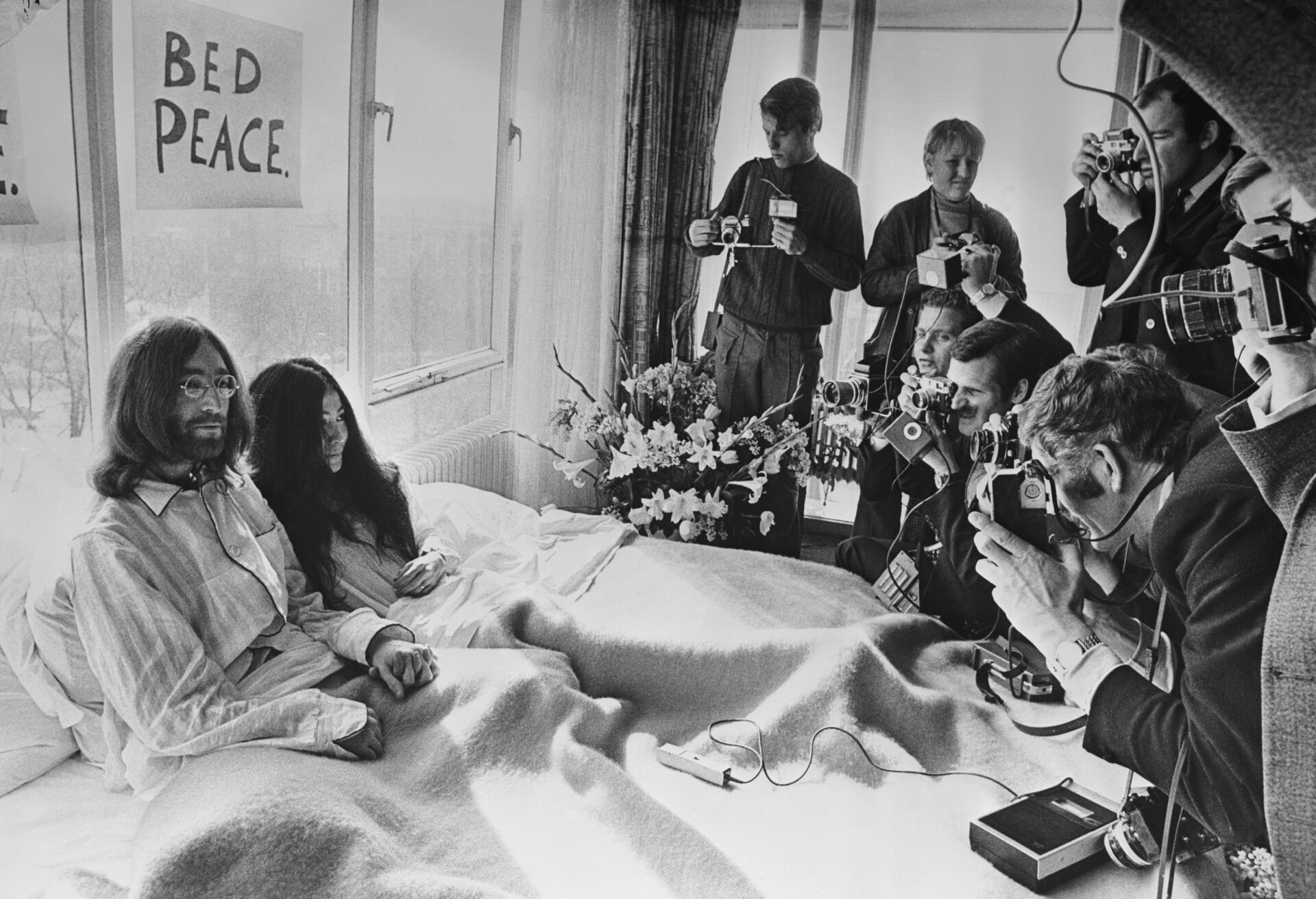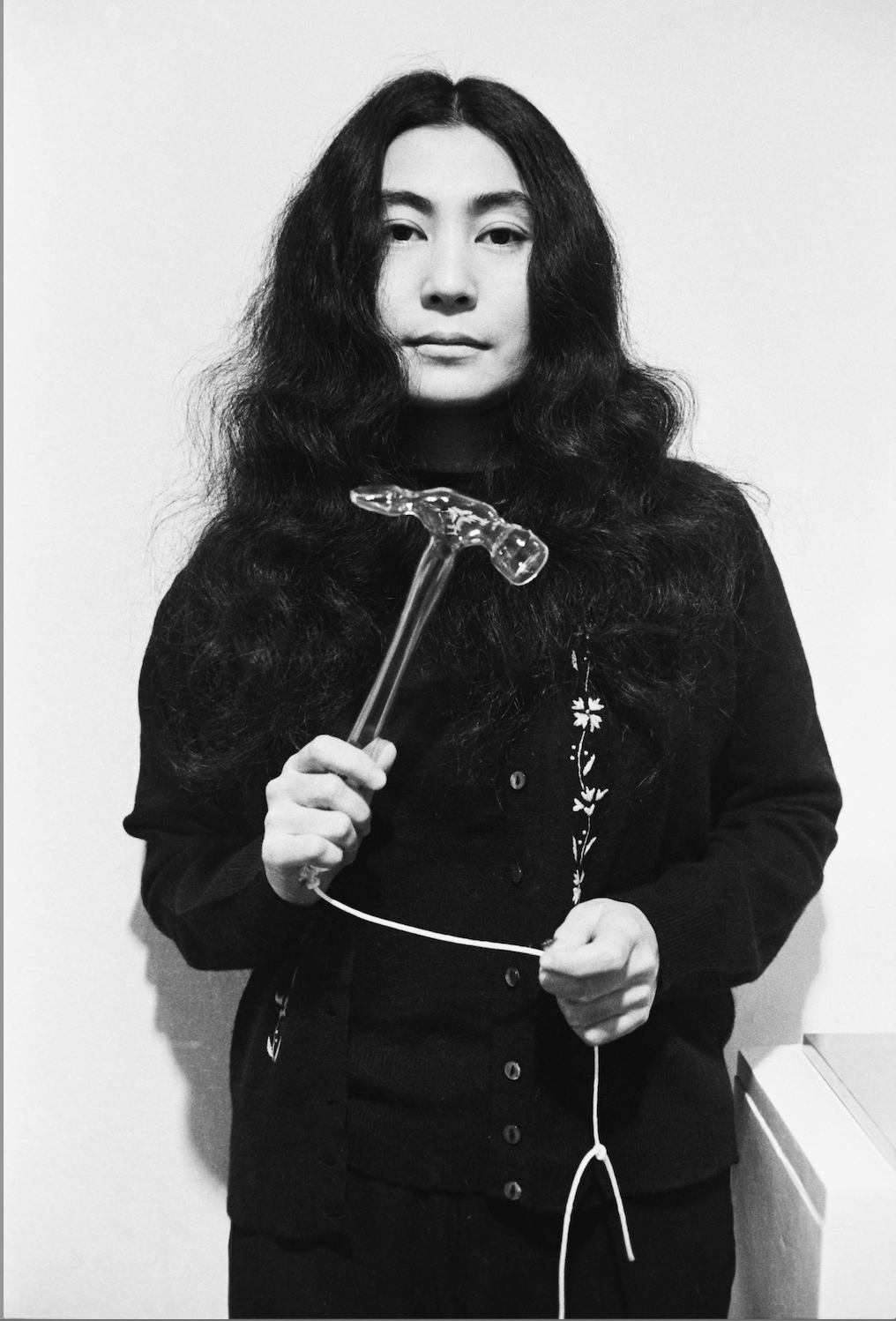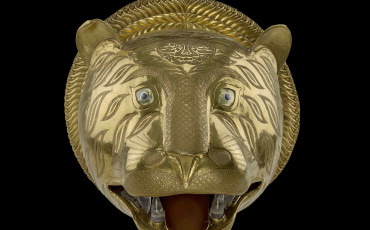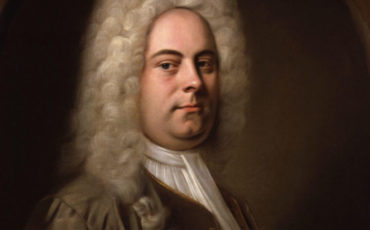The artist Yoko Ono, who turned 91 in February, has enjoyed a successful—if notorious—career over seven decades. She spent the seventies as the wife of Beatle John Lennon until his assassination in New York in 1980, and appropriately for British audiences, that part of her life forms the core of her current exhibition, ‘Music of the Mind’ at Tate Modern.
Ono is primarily a conceptual artist so there is very little material art on display. Most of the exhibits are photographs or films of performances or happenings. In the 1960s she co-founded Fluxus, an art movement which held that the action of creating art was more important than the art itself. Thus lying in bed for a week with Lennon became one of Ono’s best known works. An hour-long film of the pyjama’d pair in a Montreal hotel suite with Ono’s four-year-old daughter Kyoko leaping on the duvet, ‘peace’ posters in the windows and a posse of paparazzi at the end of the bed while sceptical journalists and others file through to pay respects or ask questions (‘Are you going to send Harold Wilson an acorn, John?’) is the most popular attraction in the show. Bean bags are supplied – an amusing touch.
 Yoko Ono and John Lennon, Bed-In for Peace, Amsterdam, 1969. Courtesy YO. Photo by Central Press/Getty Images via Tate Modern.
Yoko Ono and John Lennon, Bed-In for Peace, Amsterdam, 1969. Courtesy YO. Photo by Central Press/Getty Images via Tate Modern.
The exhibition is called ‘Music of the Mind’ although the most prominent sound reverberating around the galleries is a banging as visitors follow Ono’s instructions: ‘Hammer a Nail into the Wall; the painting is finished when it is full of nails.’ This is one of the Instruction Pieces with which Ono began her career in 1955. ‘Light a match and watch till it goes out,’ she wrote in that year. The typewritten Instructions come across as poetry. ‘Steal a moon on the water with a bucket / Keep stealing until no moon is seen on the water. 1964 Summer’. For Morning Piece, she sat on a roof selling pieces of broken milk bottles as mornings of the future. ‘It’s a useless act,’ she theorised, ‘but by inserting such a useless act into everyday life, perhaps I can delay culture a little.’
Conceptual art took hold in Ono’s mind in 1945 when Tokyo was bombed. With few possessions, she lay in a field, aged twelve, watching the sky. ‘This was my first conscious artistic act,’ she recalls. The sky is a theme. In A Piece of the Sky, upturned Nazi helmets contain pieces of a sky jigsaw which visitors are invited to take. Ono dreams that one day all those who have them might come together and complete the puzzle.
 Yoko Ono with Glass Hammer. Photo Credit: © Clay Perry via Tate Modern.
Yoko Ono with Glass Hammer. Photo Credit: © Clay Perry via Tate Modern.
Although this exhibition is rather weak in content, there is one work of genuine beauty – Ono’s Franklin Summer paintings in which she draws exquisite pointillist forms in black ink onto paper supposedly dredged up from her subconscious in the manner of a 1920s surrealist. Small faces with dark eyes are a recurrent motif, appearing as windows in a cityscape or ventricles in a heart shape.
The Yoko Ono Music of the Mind exhibition is a nostalgia show with reminiscences of London in the sixties and seventies prominent, but once thought original, Ono’s conceptualism now appears rather dated, a product perhaps of a marijuana-fuelled innocent if not naïve escapism. At least one could say the artist has remained true to her radical spirit through nine decades, and the image of her repeatedly chanting ‘whisper’ into a microphone at the age of eighty in shades and black Stetson hat is a finale worthy of wonder and admiration. Make a wish and hang it on a tree as you leave.
Music of the Mind continues until 1 September 2024 at Tate Modern.







Leave a Reply